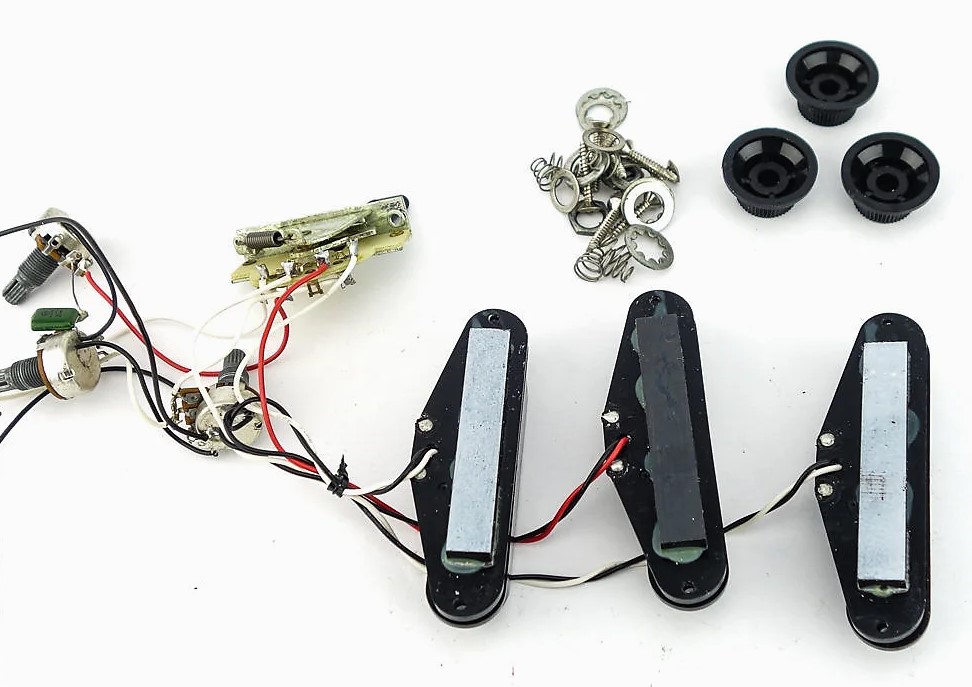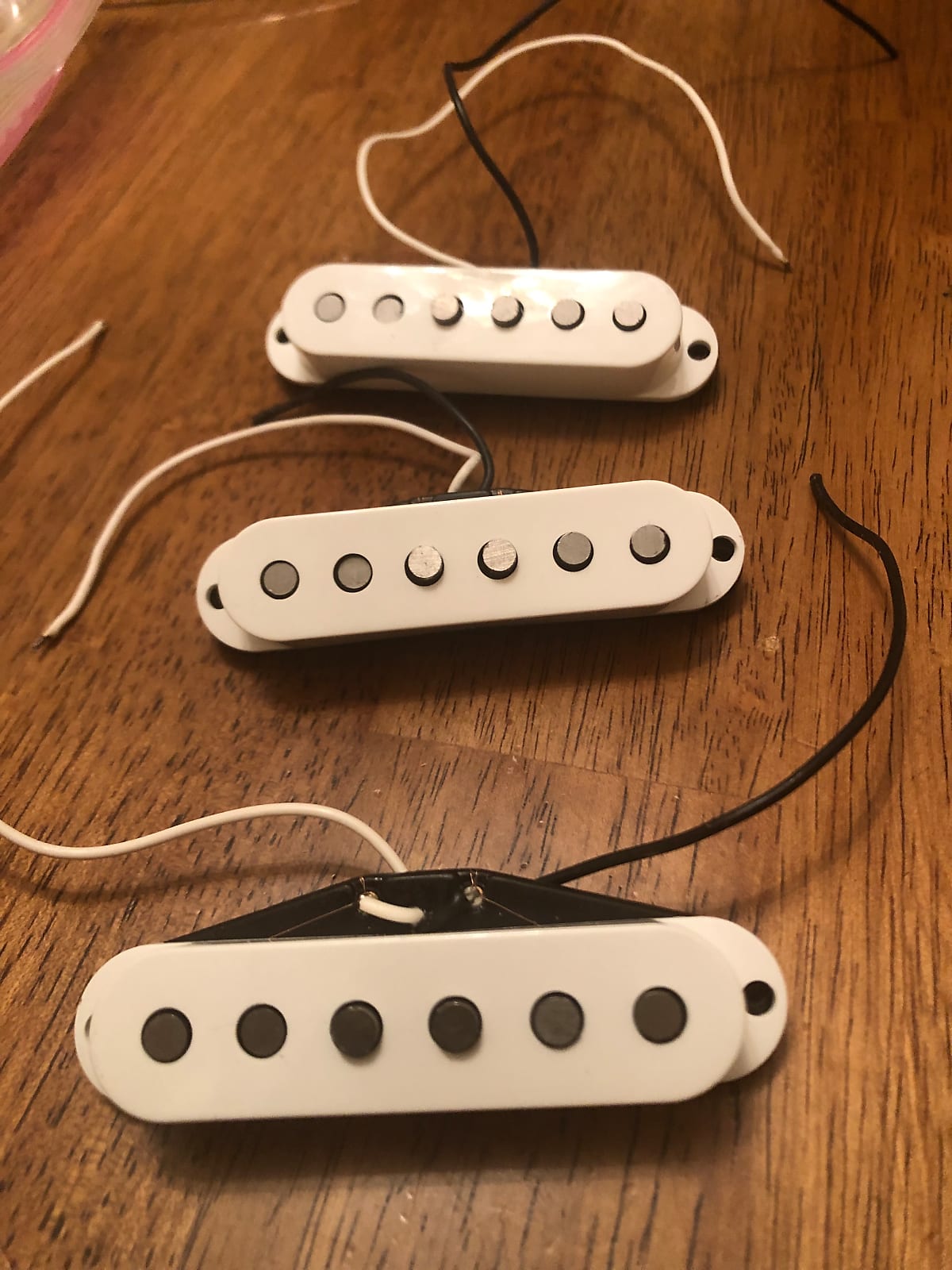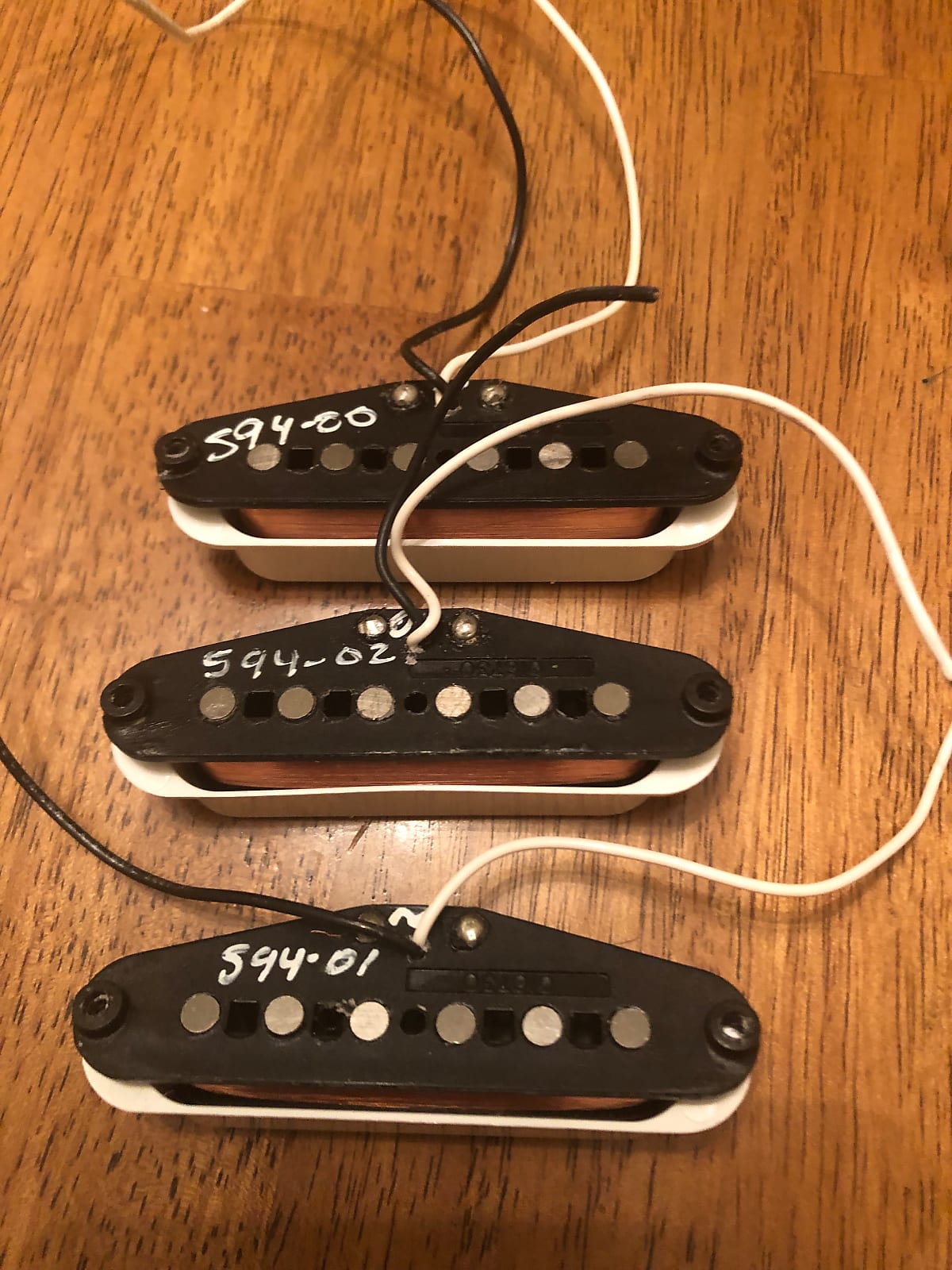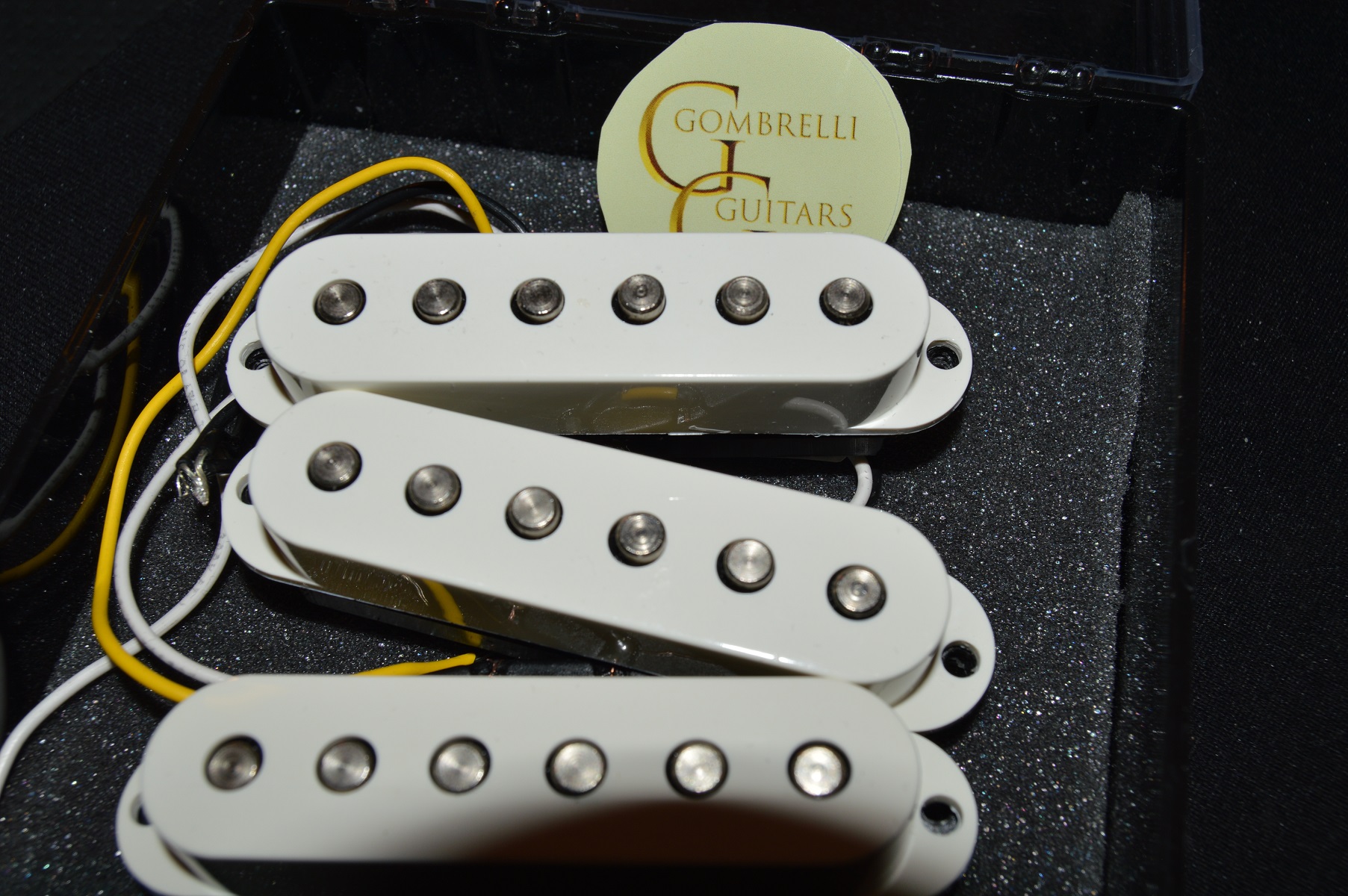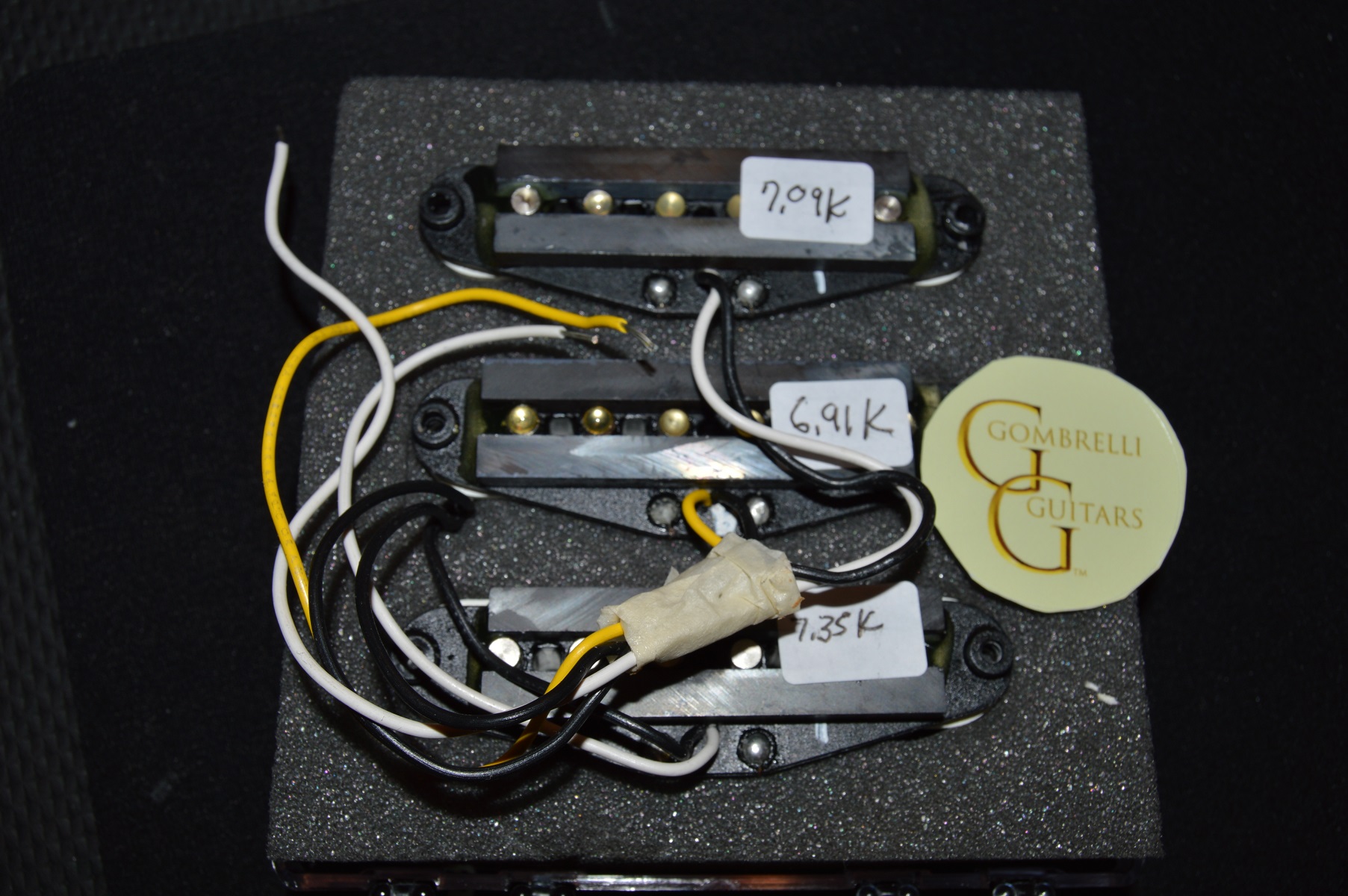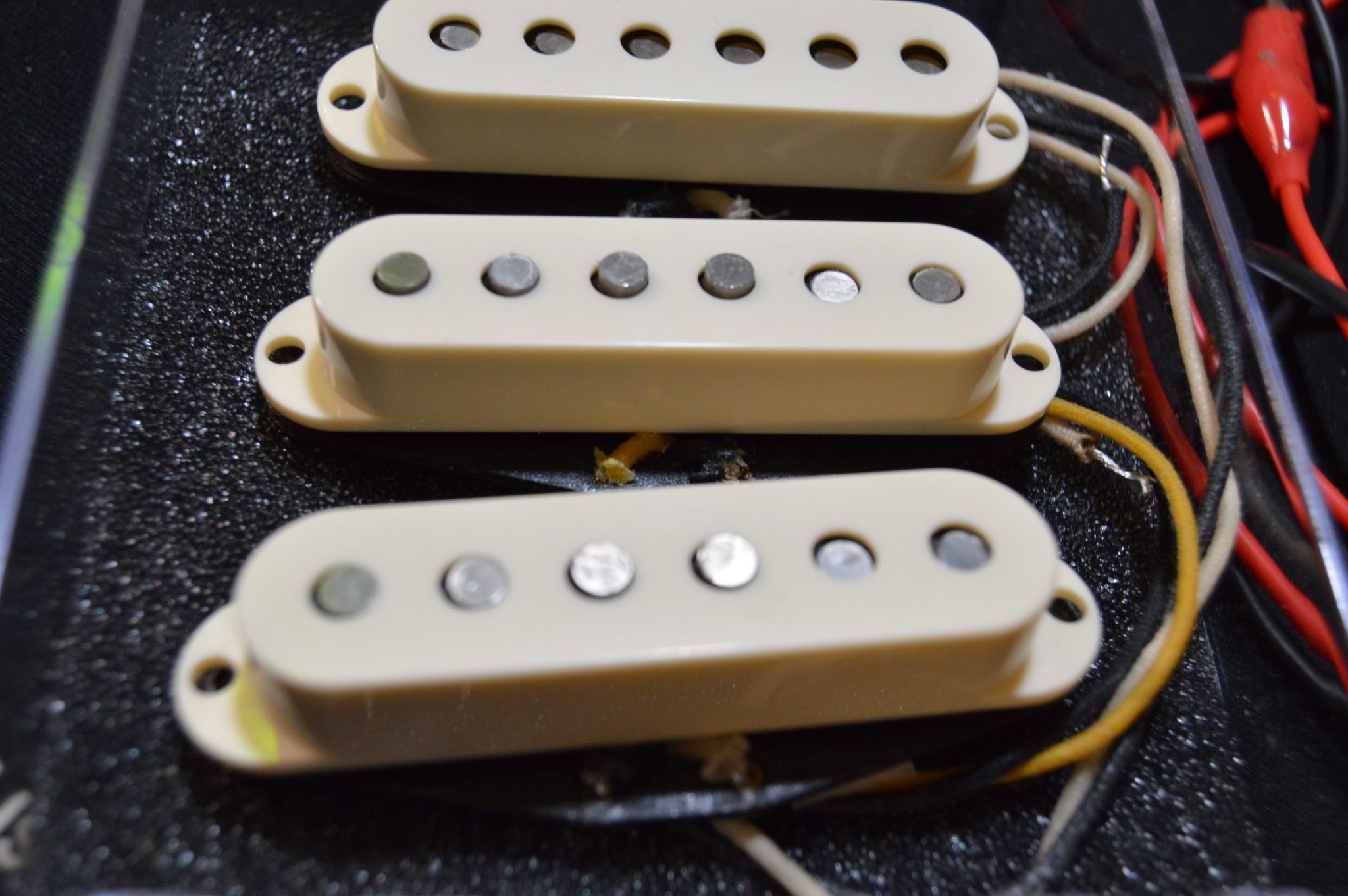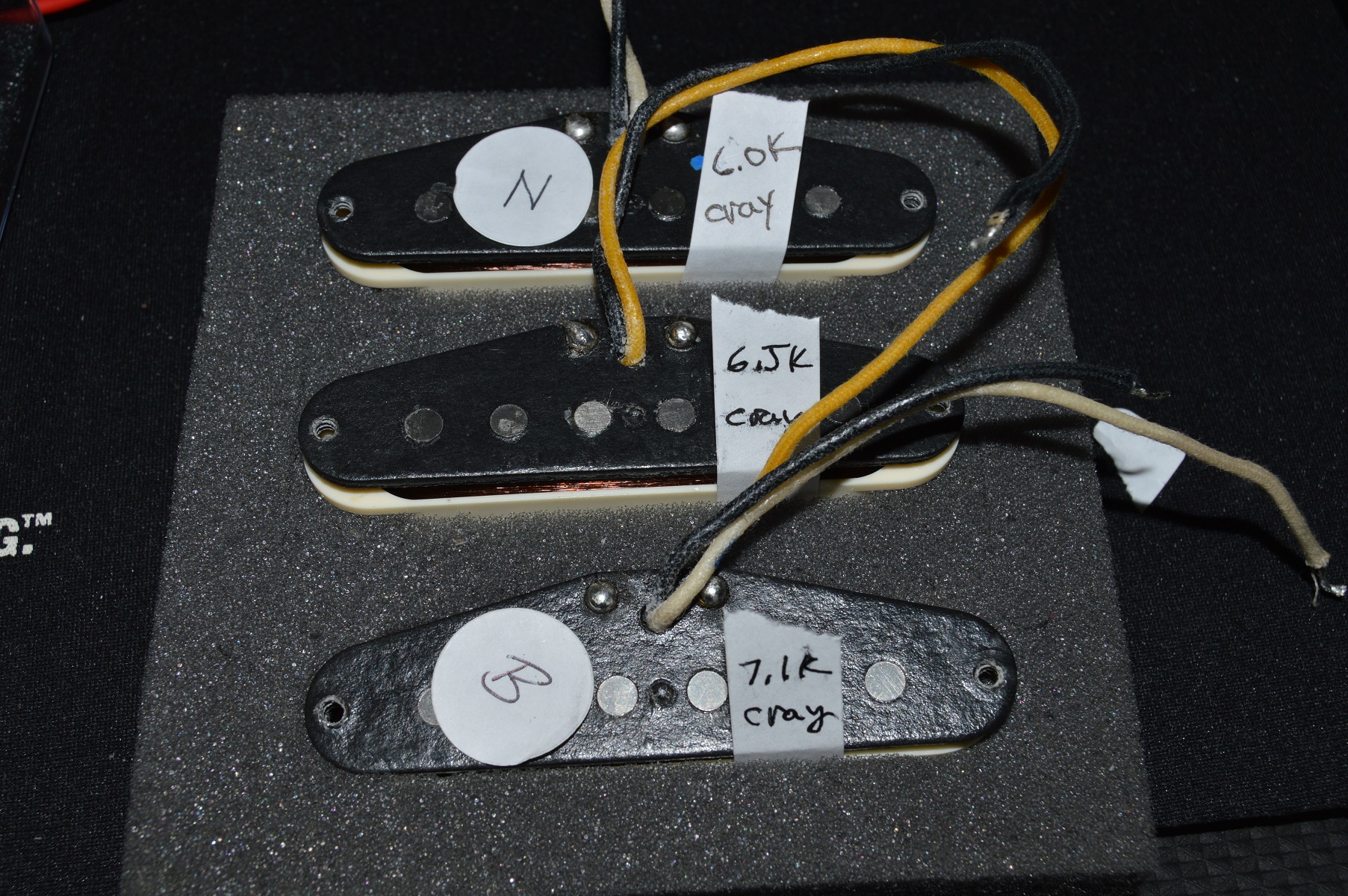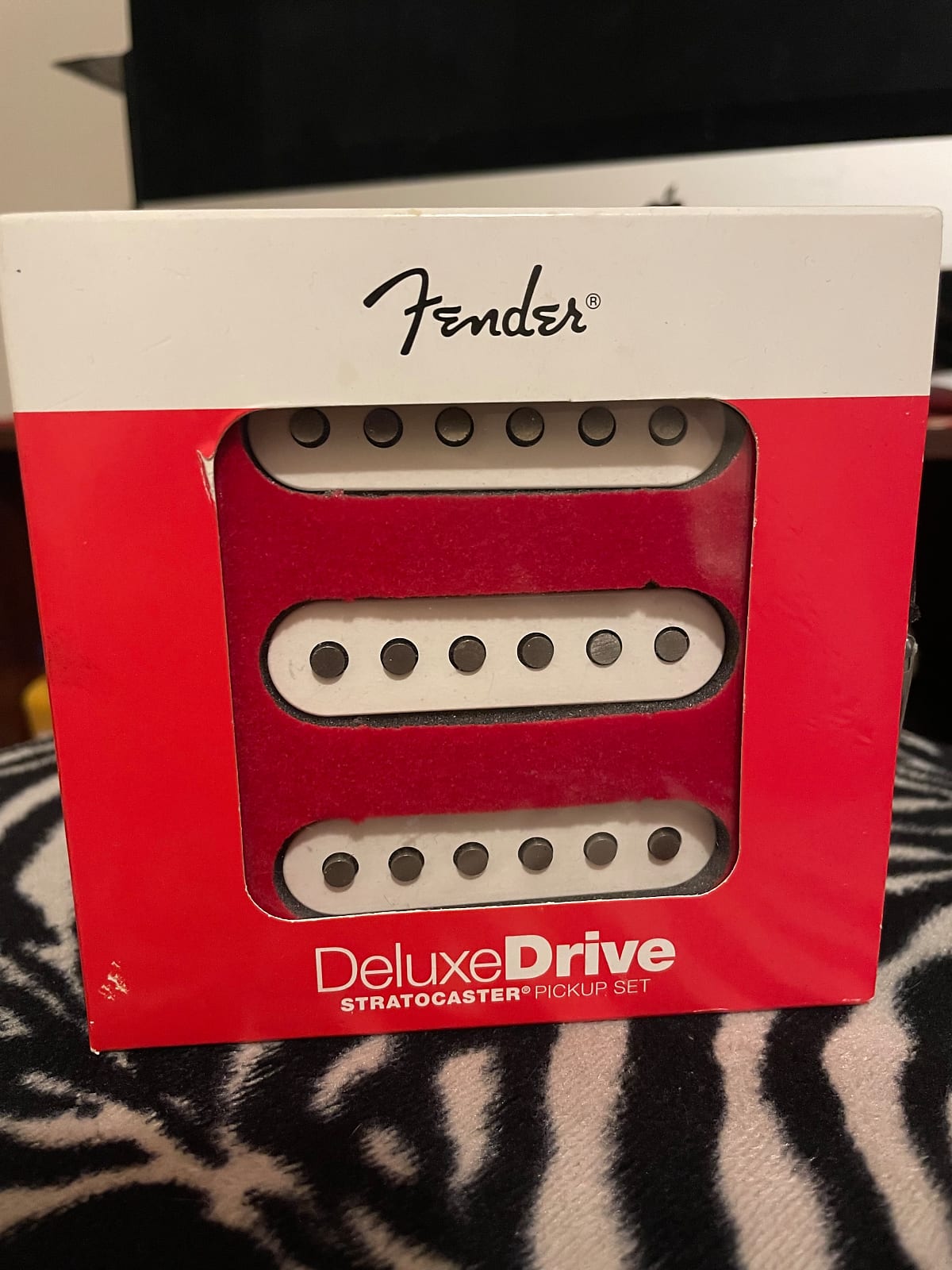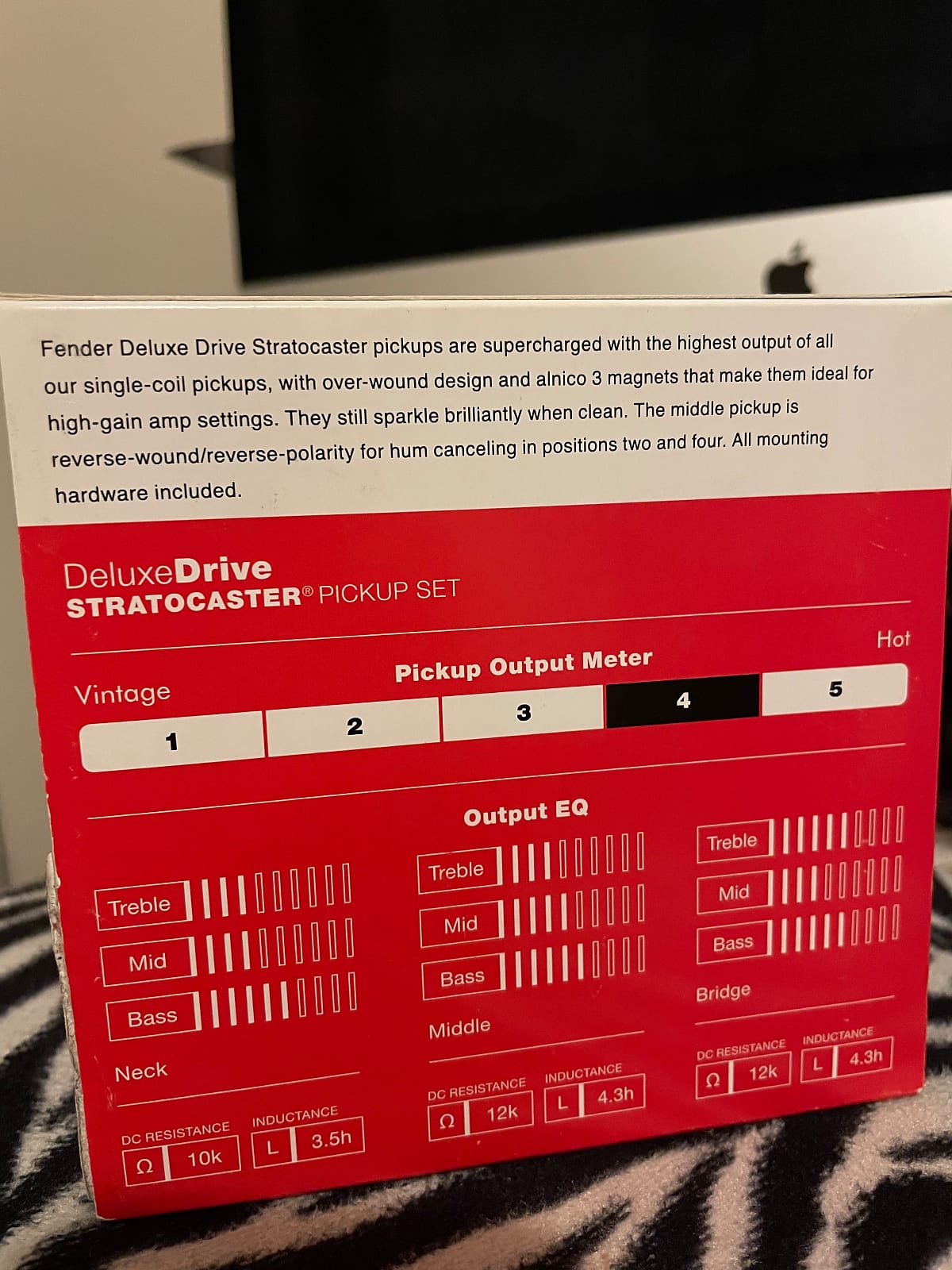Identifying Fender pickups ranges from an easy to a difficult job at times. These pages are a labor of love for sure! I focus on the newer Fender pickups for now.
NOTE: This information is subject to change and I’m updating it all the time as I run into new or conflicting information all the time, so more pickups are getting added and the editorial comments are getting updated constantly. And of course, they keep making new models!
FIGURING OUT PICKUPS
A great place to start is here: Fender Pickup Check List
Fender typically has no “set” look for their pickups and often no number scheme or another unique identifier written on the pickup itself, usually the number of the pickup represents some or all the SKU when it does exist, but not always are all the numbers written or even written on them at all.
The best way to identify them is often by looks and measurements combined. That said, some pickups, like the noiseless ones, are very easy to identify other can be dog gone hard. Bottoms, Wires and such make it a complete detective project at times because Fender would use whatever pickups they had on guitars in some cases so an MIM could show up with higher end pickups, or test runs, etc.
Big Picture Info
- Don’t be fooled – The “Number” on the back of the pickup is usually a middle number in the actually part number or part of the part number, and this may change over time for the same model of pickup. Sometimes it’s rock solid so examine with caution.
- The number that is “molded” into the plastic is a BOBBIN NUMBER and is used over and over in different pickups. That just the plastic part number and is worthless for identifying pickups.
- The resistance values are approx. and can vary up to 10% in some cases or even more. The DCR are a guideline, not an absolute but in some cases they are very close.
- Pay attention to the stock wires used.
- Pay attention to the staggering on the poles.
- DCR is only PART of the sonic equation!!
INDUCTANCE
Inductance varies by the frequency used to measure the inductance and the technique used. The recommendation is to use 120Hz and make sure you measure using SERIES mode. This will get you values very close to what Fender publishes and the difference at that point should be the actual pickup.
Q VALUES
The Q Value (the width of the frequency notch) changes by measurement frequency and since the Q on pickups is quite wide, expect a 0.3 ish value and use 120Hz the same as you use for inductance measurements.
GAUSS
I don’t have a lot of Gauss readings but see my Magnetic Pole info page. Note that most Guass meters measure in Telsa, just multiply by 10 to get Gauss.
Last Update: 2024.06.11
The numbers are shortened versions of part numbers shown on the Fender service diagrams eg 0054594000. Here’s a list of some of the Artist Series and rarer single coils.
As a note: The published “EQ” values on Fender packages are confusing at time, it might be rated High Output but all the “stats” be low or visa versa.
Jimi Hendrix Monterey pickups 60s
- No Bevel
- DEEP Stagger
- Black and White Leads poly coated
- Numbers: 594-01, 02 and 00 (bridge)
Here’s some stats I found for these but I didn’t personally measure them. This are very typical very late 60s/early 70s vintage measurements.
Fender Mexico AlNiCo in Plastic pickups, 2018 from an Hendrix Monterrey Strat
Bridge
– DC Resistance: 5.820K ohms
– Measured L: 2.201H
– Calculated C: 174pF
– Gauss: 700 – 1050G (AlNiCo 5, some not saturated)
Middle
– DC Resistance: 5.729K ohms
– Measured L: 2.183H
– Calculated C: 175pF
– Gauss: 700 – 1050G (AlNiCo 5, some not saturated)
Neck
– DC Resistance: 5.689K ohms
– Measured L: 2.193H
– Calculated C: 184pF
– Gauss: 700 – 1050G (AlNiCo 5, some not saturated)
The 594.00, 594.01 and 594.02 I guess is a more shortened version of 0054594000 with 00, 01, 02 added.
The Hendrix Monterey Strat service diagram shows the pickups separately as 54594000, 54594001 and 54594002.
ALBERT HAMMOND JR.
These are really unusual. They are ceramic! What? You say. Well, There’s nothing intrinsically wrong with Ceramic pickups at all. It’s just a different sound.
What really makes these unusual is that they are wound differently than any other MIM Ceramic pickup. They are wound differently.
NOTE: IDing these if they are not known is a bit more difficult BUT if you know which is the bridge pickup and it measures around 7.3K to 7.5K you likely got a set of these on your hands.
- RWRP middle pickup
- Beveled top pole pieces
- Staggered (Looks to be the same as the default MIM Ceramic)
- The DCR is different, the middle pickup is lighter wound and the Bridge a bit heavier than the rest.
- About 4.4 H (which is about the same as the MIM version)
- Bridge: 7.35K, Middle 6.9K, Neck, 7K
- (A normal MIM is 7K for all)
- Usually come in white.
ROBERT CRAY
I rather like these pickups. The middle and neck are staggered and the bridge is flat, very usual. The output increases as you move to the bridge. This is a good configuration. the middle is RWRP
- Neck 6 K
- Middle: 6.5K
- Bridge: 7.1K
- Staggered (Typical) except bridge which is FLAT (very unusual)
- Flat bottoms, plastic coated cardboard
- Middle RWRP
- Pickguard: NUMBER is 0059521000 – This is consistent
Number: 250 (bridge), 251 (middle), 252 (Neck)
Marking Note: Not all versions have numbers on them, some are just black. Some have DOTS on the bridge and neck (like Fat 50’s) – And even others have a GRAY bottom for the middle pickups. It would surprise me if some of these were actually other model pickups that were use temporarily when stock was low or other reasons.
NOTE: There is confusion which which pickup has the FLAT Poles, some specs say Bridge, some say Neck, because the bridge pickup is a higher value and that’s usually how it’s done I suspect it’s the Bridge.
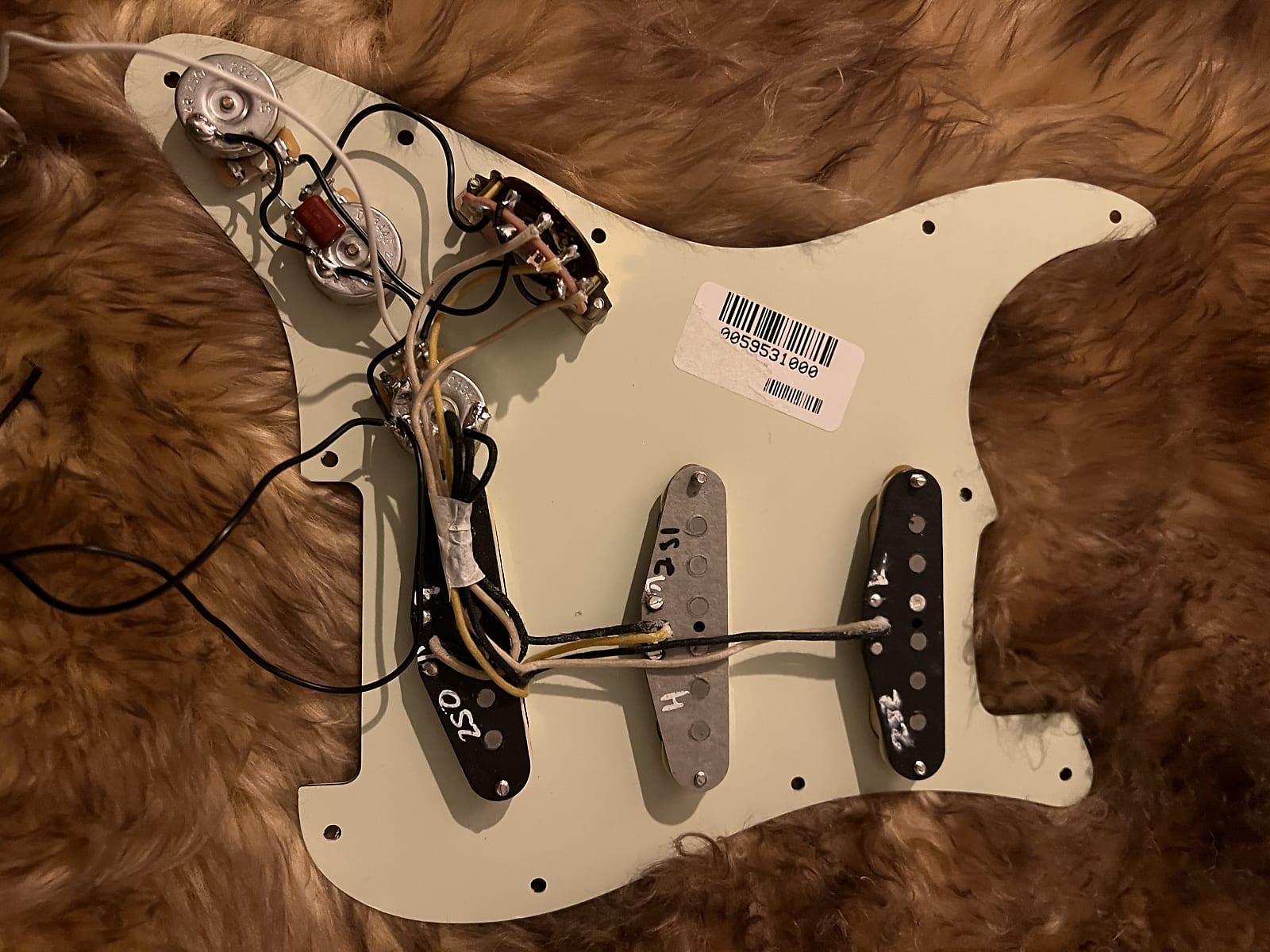
DELUXE DRIVE
Updated: 2024.07.03
(SEE HIGHWAY ONE)
There’s a theory that these are the 2nd generation high output Highway 1 pickups. They actually have the same number, however the bridge pickup wire color is different. I’ll do more research on this later but its seems very likely given the matching number and output. The might have just changed the bridge pickup.
Summary
These are very HIGH OUTPUT and when you look at the stats they talk, and loudly.
Retail box issue: The BOXED version often do not have the wire colors (actually, I’ve never seen one with the proper wire colors, they just say white and black). However, you can verify the middle is indeed the red because it’s RWRP. when in doubt, measure it out!
Audio summary: These are not super straty sounding pickup and are warm, due to the high inductance and Dc resistance which lowers the frequency notch. If you like high output, these are likely for you.
- PACKAGED BOX NUMBER: 0902222000
- Polysol-coated magnet wire
- Flush-mount pole pieces for even string response (NO STAGGER) – somewhat unusual since most Fender pickups are staggered.
- Top is NOT Beveled but cut flat.
- Alnico 3 magnets for more focus and enhanced dynamics
- Vinyl-coated output wire and black plastic bobbin
- Fender Rated Output: 4 out of 5
- Fender Neck and Middle: Bass: 6, Middle 4, Treble 4
- Fender Bridge: Bass 6, Middle 4, Treble 6
- DCR: Neck 10-10.5K, Middle 12, Bridge 12 (Actual measurements can vary)
- Measured Set: (N) 11.25K, (M) 12.5K (B) 12.2K
- Inductance: Neck 3.5H, Middle 4.3H, Bridge 4.3 H
- Measured Set (N) 3.6H, (M) 4.38H, (B) 4.3H @ 120hz
- Q (N) 0.231 (M) 0.263 (B) 0.265
- Measured Set (N) 3.6H, (M) 4.38H, (B) 4.3H @ 120hz
- Capacitance Measured: 135pf for the neck, about 123pf for middle and bridge
- RWRP Middle Pickup with RED hot wire.
- Wires Colors (verified): All Black are grounds – “Hot” wire: White (NECK), Red (MIDDLE rwrp), Yellow (BRIDGE)
- Numbers (verified) 72706 (neck), 72707 (middle), 72708 (Bridge)
- Gauss (approx) G: (N) 450 (M) 500 (B) 500

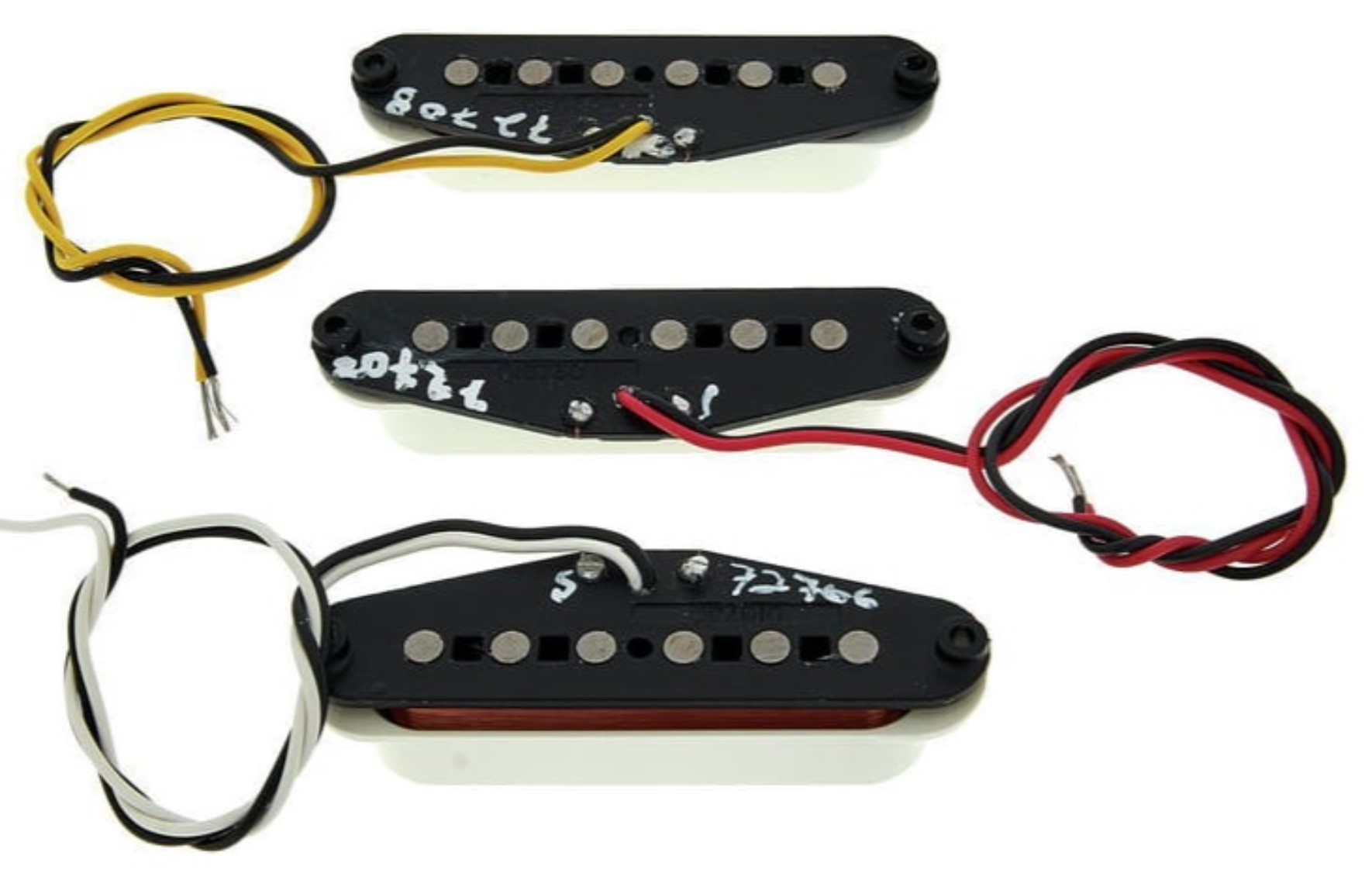
AMERICAN VINTAGE II (57 and 73)
I don’t have pictures at the moment but I was able to get my hands on the 57 and 73 so I measured their Stats in Guitar. These are usually really close because they have a 250K resistor across them so your only talking about 2.5% different in measurement value.
General Specs are noted for both:
- Strong Stagger (both)
- Aged White Covers (both)
American Vintage II 57
Great sounding pickups
- Bridge: 5.85K – 2.26H
- Middle: 5.87K – 2.25H
- Neck: 5.85K – 2.25 H
American Vintage II 73 Mocha
- Bridge: 6.54K – 2.6 H
- Reference: Original: 7.21K
- Middle: 6.1K – 2.2 H
- Reference: Original Strat: 6.73K
- Neck: 5.8K – 2.2H
- Reference Original: 7.17K
1990s Limited Edition JPN Release
This read a LOT like Vintage Pickups. Specifically Custom Shop 69 and The Neck on the American Vintage II 73
Bridge: 80pf – 5.8K – 2.3H
Middle: 80pf – 5.8K – 2.28H (RWRP)
Neck: 159pf – 5.8K – 2.8H
What I like about these is the MIDDLE poles have been adjusted to be very flat where the neck and bridge are staggered. Some thought went into designing these.
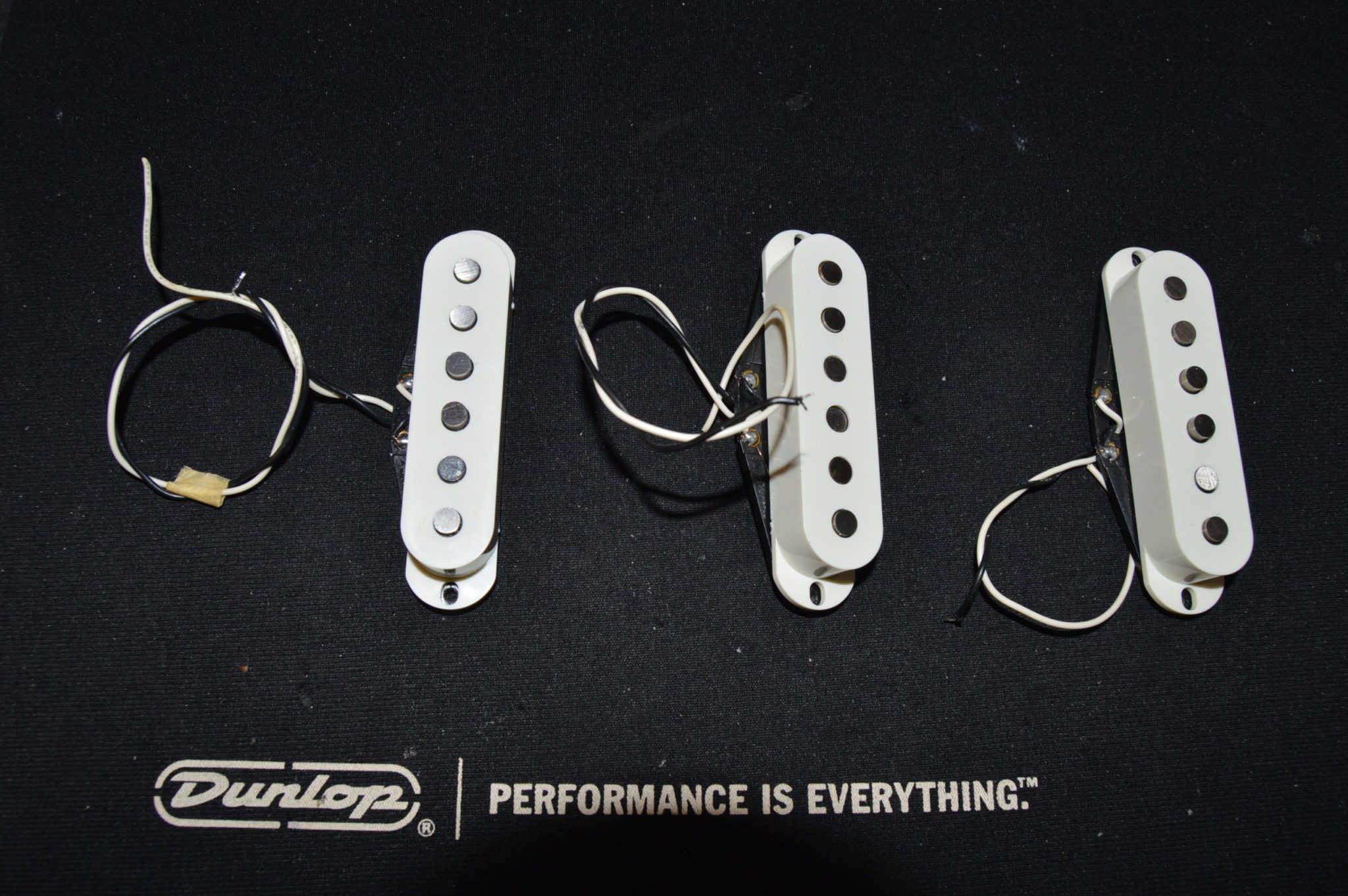
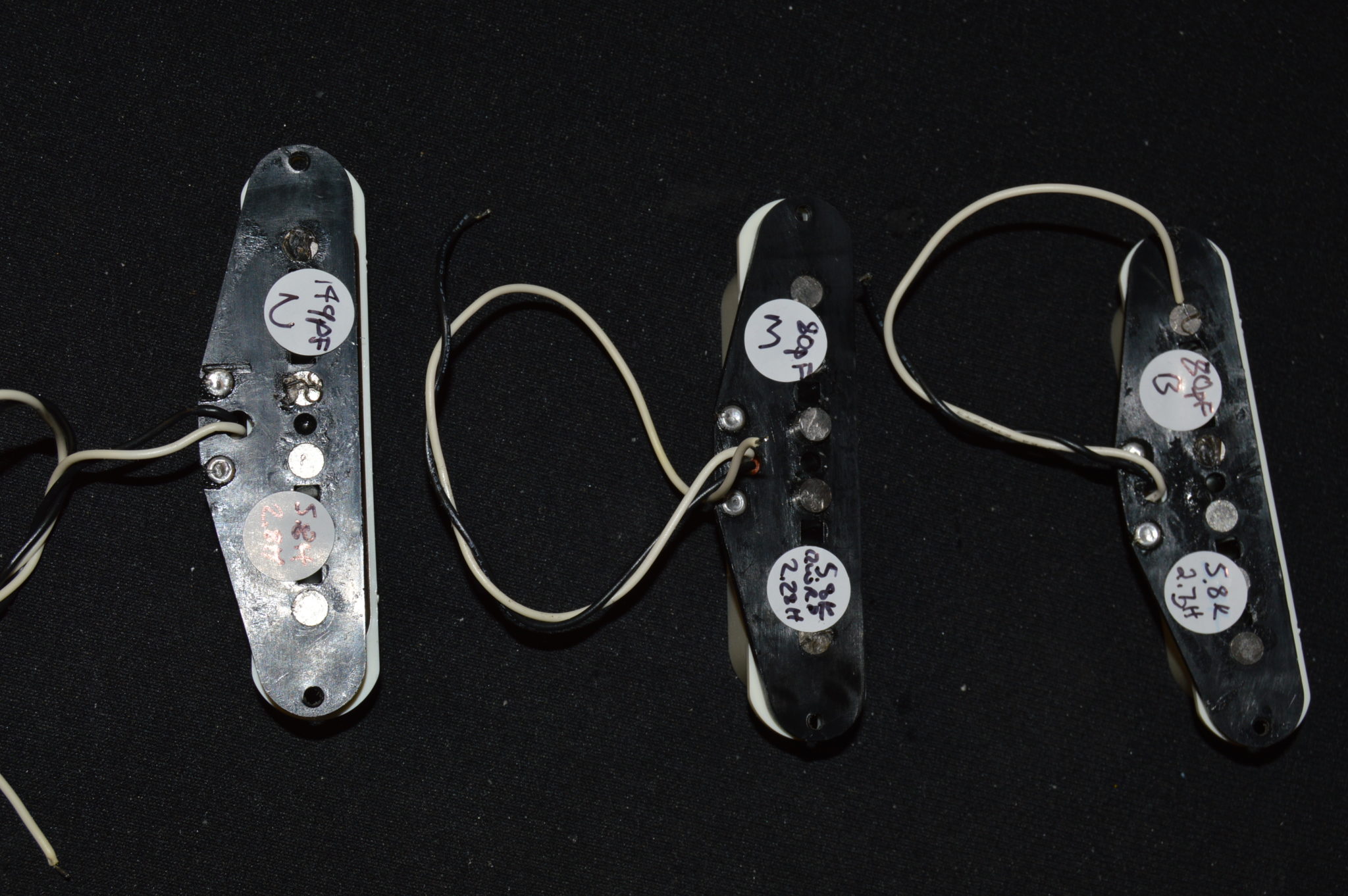
ERIC JOHNSON
Last Update: 2023.07.07
I don’t have a set of these to test out so here’s the specs I’ve found. These are sold in Retail Packages all over the place but the prices remain medium high.
From Fender
- Hotter output bridge pickup than vintage-style pickups
- Highly dynamic, balanced output
- Alnico 3 and alnico 5 magnets
- Reverse-wound middle pickup to eliminate hum
- Neck and Middle: Alnico 3, Bridge: Alnico 5
- Formvar-coated
- Neck: 5.8-6k, Middle: 6.3-6.5k, Bridge: 6.7-6.9k
- Neck/Middle: 2.5-2.7 Henries, Bridge: 2.9-3.1 Henries
- Fiber Bobbin
- Cloth-covered
- Staggered Poles
- WIRES: Black and White, Middle is YELLOW and white (RWRP)
Myself (and the general guitar playing public) seems to like the bridge pickup with more bass so that’s a “spec” plus. They also used different magnets for the bridge so there’s a lot of thought that went into this. The specs look very appealing so I will be looking to try out a set.
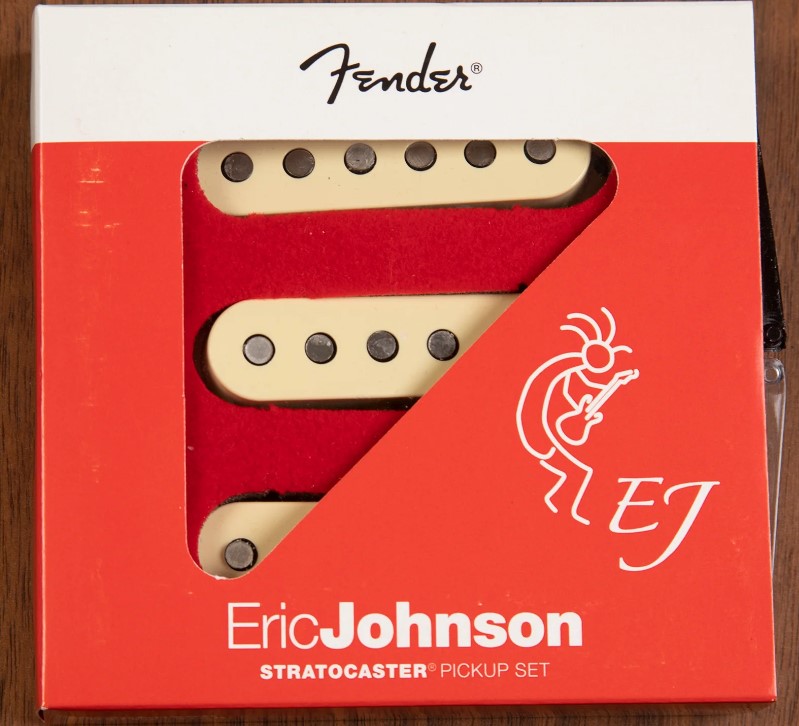
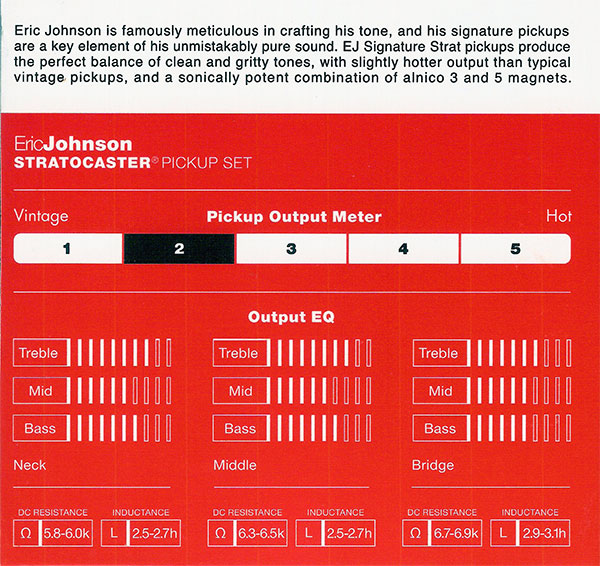
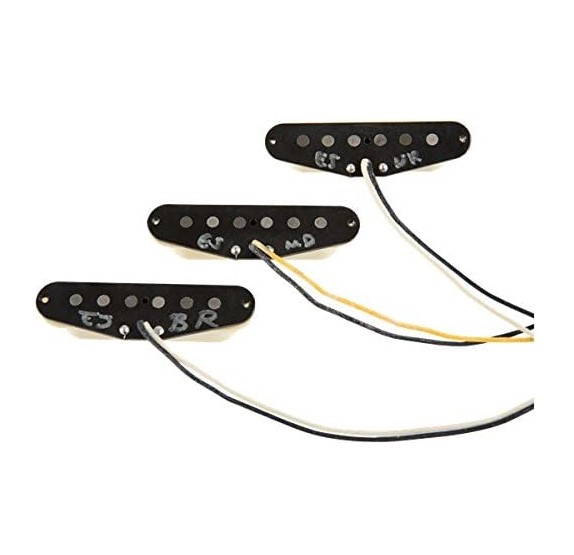

AERODYNE SPECIAL
Updated: 2023.12.27
I haven’t taken these out of an Aerodyne yet. The covers depend on the model, either Aged White or White. I’ll eventually update this with Inductance values, given the straty sound I’d expect it to be lower.
Audio Review: Wow, these guys are super straty sounding when recording.
The newer AERODYNE (2020s) have nicer pickups than the original model, which look more generic with bar magnets on the bottom and cheaper bobbins, the pots on the older Aerodyne are also smaller, not the larger alpha pots of the later version.
There’s a bit of variance on the pickups. Here’s true measurements I got: These are likely 5% higher or so due to the resistive loading of the pots on full.
HSS Aerodyne
- Set 1: (Neck) 6.25K (Middle) 6.25K (Bridge) 7.7K — GREEN HSS
- Set 2: (Neck) 6.33K (Middle) 6.67K (Bridge) 8K — GRAY HSS
- Set 3: (Neck) 6.4K (Middle) 6.3K (Bridge) 6.6K — BLUE SSS
- Set 4: (Neck) 6.2K (Middle) 6.3K (Bridge) 6.3K — WHITE SSS
DETAILS
- Black Bottoms
- White and Black single wires
- Typical Mild Stagger
- Flat poles NOT bevelled
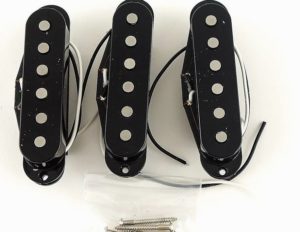
These are black bottom, the rubber thingies are just spacers used for mounting.
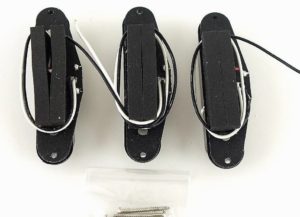
Here are some more measurements found on the web (not done by me)
BRIDGE
- DC Resistance: 6.345K ohms
- Q @1khz: 2.47
- Measured L: 2.629H
- Calculated C: 109.33pF
- Gauss: 1050G (AlNiCo 5)
MIDDLE
DC Resistance: 6.615K ohms
Q @1khz: 2.32
Measured L: 2.558H
Calculated C: 99.92pF
Gauss: 1050G (AlNiCo 5)
NECK
- DC Resistance: 6.260K ohms
- Q @1khz: 2.37
- Measured L: 2.475H
- Calculated C: 106.46pF
- Gauss: 1050G (AlNiCo 5)
OLDER AERODYNE
